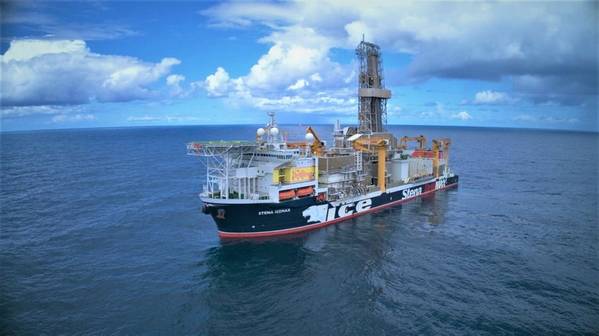
Offshore drilling contractor Stena Drilling has had its asset management software system on six offshore rigs replaced.
The company hired UK-based tech firm SRO Solutions which, over the course of 14 months replaced its existing asset management system with IBM’s Maximo software.
Six engineers from SRO carried out the work, and also delivered training on the rig fleet in the Canary Islands, Israel, Guyana, and Scapa Flow in Scotland.
SRO operations director Andrew Carrie led the project which is the 20th major asset management system upgrade SRO has undertaken, using IBM’s Maximo software in the maritime sector in the last 10 years.
He said the project took place on four drillships and two semi-submersible vessels and involved consolidating vast amounts of data from Stena Drilling’s onshore headquarters in Aberdeen and its fleet into one single platform. This included 7500 unique pieces of equipment on each vessel and 1.2million historical work orders.
"This was a very demanding, sensitive project which drew on all SRO’s expertise to ensure a smooth transition of data systems, from each ship and the headquarters, to the single Maximo platform," he said.
"This was important as under the old asset management system the HQ and the ships were not fully integrated or tied into each other.[...] Stena recognized the switch to IBM’s Maximo was absolutely necessary for all the operational and cost benefits it could offer.”
Carrie said Maximo now acts as one of the core pieces of software underpinning Stena Drilling’s IT operations.
"It is really exciting, after all the effort over the last year, to see Maximo now in place working its magic for Stena after it took a leap of faith to invest in SRO and IBM,” he said. “All the equipment and spares across the six vessels are now properly documented and monitored with the same codes, whereas before each ship had different codes for the same equipment which made maintenance and purchasing decisions very inefficient.
"Now Maximo enables proactive equipment maintenance preventing expensive and disruptive breakdowns while procurement can plan with greater efficiency, understanding what spares can be shared between ships saving unnecessary purchases. The purchasing process is now massively streamlined so when equipment does need to be bought it can be done in bulk from a single vendor for all the ships bringing down costs. When you consider that ships like those in the Stena fleet spend millions every year on equipment it is vital to ensure costs are controlled which Maximo does. In addition, Maximo provides live foreign exchange rates ensuring Stena has the option to use the currency with the strongest buying power.”
He further said that a big benefit of Maximo is its ease of use compared with other asset management systems which can be cumbersome and rigid and it automatically roots out data conflicts.
“The beauty of Maximo is that it is the most advanced and heavily invested in enterprise asset management software in the world which makes it highly sophisticated as it is constantly updated,” he said. “This means it can work and talk to new IT systems and software very easily where a lot of older computer maintenance management systems (CMMS) struggle with digital integration as their functionality is too rigid causing a massive headache. This is very important for the likes of the classification society surveys which expect increasing levels of IT system functionality to ensure ships are fully compliant with standards.”